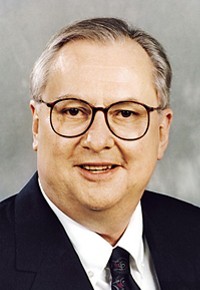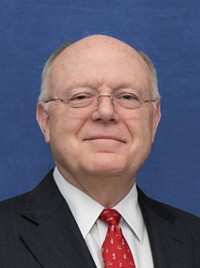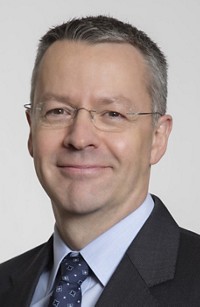Advertisement
Grab your lab coat. Let's get started
Welcome!
Welcome!
Create an account below to get 6 C&EN articles per month, receive newsletters and more - all free.
It seems this is your first time logging in online. Please enter the following information to continue.
As an ACS member you automatically get access to this site. All we need is few more details to create your reading experience.
Not you? Sign in with a different account.
Not you? Sign in with a different account.
ERROR 1
ERROR 1
ERROR 2
ERROR 2
ERROR 2
ERROR 2
ERROR 2
Password and Confirm password must match.
If you have an ACS member number, please enter it here so we can link this account to your membership. (optional)
ERROR 2
ACS values your privacy. By submitting your information, you are gaining access to C&EN and subscribing to our weekly newsletter. We use the information you provide to make your reading experience better, and we will never sell your data to third party members.
Policy
How to Succeed in Business
by REVIEWED BY DAVID M. KIEFER
February 7, 2005
| A version of this story appeared in
Volume 83, Issue 6
The classic American success story, right out of a Horatio Alger novel, is that of a poor lad born overseas or as the son of immigrant parents who dreams of making it to the top. The boy is ambitious, hardworking, bright, and driven to carve out a brilliant career for himself and to please the father and mother who have sacrificed to give him a chance.
This is the tale spun in two recent autobiographies in which the protagonists each rise pluckily to head giant corporations that have had an impact on the chemical enterprise. "Medicine, Science, and Merck" is the story of Roy Vagelos, who became chief executive officer at Merck before retiring in 1994. "Maverick Management: Strategies for Success" is the story of Alexander F. Giacco, who rose to the position of CEO of Hercules before he stepped down in 1987.
Vagelos' book was coauthored by Louis Galambos, who teaches history at Johns Hopkins University. Vagelos decided that, despite his retirement, he would have too little time to examine his past. Instead, he discussed his career with Galambos, who then wrote a draft that Vagelos edited.
Both Vagelos and Giacco grew up with warm, supportive families. After rather desultory stints in public school, both more or less stumbled into careers in science. Both really made their mark, however, in managing global corporations. And both felt compelled to succeed. "As far back as I can remember, I had ideas about getting rich," Giacco notes.
Vagelos was born in 1929 in Westfield, N.J., where his Greek-born father was co-owner, with his brother, of a small neighborhood snack shop. After a brotherly falling out, the family moved to nearby Rahway, where Vagelos' parents ran a luncheonette. Vagelos grants that he didn't shine at schoolwork. He was a slow learner, more interested in playing the violin or cutting up with his classmates. An inspiring teacher, however, brought out a latent talent for algebra. Vagelos quickly realized that a burgeoning interest in science and math could only be fulfilled by a college education.
After winning a partial scholarship, he majored in chemistry at the University of Pennsylvania, graduating Phi Beta Kappa in 1950. Torn between pursuing a graduate degree in chemistry or going to medical school, he chose the latter at the urging of his father, whose father had been a physician in Greece. Vagelos earned an M.D. at Columbia University in 1954.
Vagelos was deferred from military service while in medical school, but he was obligated to serve a two-year stint as an Army doctor. After learning that he could fulfill this requirement in the Public Health Service, Vagelos obtained a two-year assignment as a research physician at the National Institutes of Health. For Vagelos, it was a fateful turning point.
He joined a group headed by noted enzymologist Earl Stadtman, who had been conducting fundamental studies on microbial metabolism. Vagelos had only taken a single course in biochemistry up to this point. But under Stadtman's tutelage, he was soon transformed from a medical doctor to a research scientist deeply engaged in the complexities of fatty acid metabolism. When the two-year hitch was up, Vagelos decided to stay on at NIH.
Except for a sabbatical year at Pasteur Institute, in Paris, Vagelos remained at NIH until 1966. By then, he had built a solid reputation as a biochemist. He was tapped to become chairman of the department of biological chemistry at Washington University, St. Louis, where he continued to do research and started teaching. In addition, though, he became engulfed as an administrator in the quagmires of academic politics.
By the mid-1970s, Vagelos' research had become increasingly focused on lipids, including cholesterol. His early training in medicine led him to wonder if enzyme inhibitors might prevent buildup of cholesterol and the resulting cardiovascular disease. About this time, he also began consulting work for Merck.
In late 1974, Merck recruited him to head its basic research unit. A year later, he was named president of Merck Research Laboratories. At that time, drug discovery at Merck, as at other major pharmaceutical companies, was largely based on blind, empirical screening of myriad active chemical entities or on extracting compounds from microbial broths derived from soil samples.
Vagelos became convinced that a molecularly targeted approach would prove more productive. The task of bringing change of this nature to a giant research operation was daunting, however. For many older scientists, his ideas about drug research were a hard sell. But one of the first major new drugs to come out of Vagelos' molecular-target approach was Mevacor (lovastatin), an enzyme inhibitor that reduces blood cholesterol levels.
By the early 1980s, Vagelos set his sights on a higher position. He was named senior vice president in 1982 and was responsible for strategic planning, which at Merck at the time largely consisted of aiming at targets of opportunity rather than formulating long-range objectives. Vagelos soon rose to executive vice president, and later he was named CEO. He centralized Merck's global operations, forged marketing alliances with other drug firms, and divested activities to focus on the company's core pharmaceutical business.
Vagelos admits to making errors in running the firm and laments that many of the research projects that he championed were still unfinished when he faced mandatory retirement in 1994. But he's confident that he did much to strengthen Merck. During his watch, the company's annual sales tripled to $10.5 billion while profits climbed from $540 million to almost $2.2 billion.
He has enjoyed many accolades, and since retirement he has kept busy as board chairman of two small start-up biomedical research firms: Regeneron Pharmaceuticals and Theravance Inc. (which he cofounded). He also served for several years as chairman of the board of trustees at the University of Pennsylvania, and he has been a financial benefactor to the university. The profits from his book will be donated to charity, Vagelos says.
Al Giacco, like Vagelos, had family roots on the European coast of the Mediterranean. He was born in southern Italy in 1919. His father's heart, though, was in the U.S., where he had lived for a few years. Thus he moved his family across the Atlantic to settle in Meriden, Conn.
Giacco and his parents recognized that he would need a college education if he were to achieve his ambitious goals. And because he was interested in "inventing new products," he decided to major in chemical engineering at Virginia Tech. After graduating in 1942, he was hired by Hercules Powder for a supervisory job at Radford Arsenal, in Virginia, which Hercules operated for the Army to produce explosives and propellants. In 1945, he shifted to a position at the Allegany Ballistics Laboratory in western Maryland, which Hercules operated for the federal government to make solid-rocket propellants.
By 1958, Giacco points out, he had achieved considerable success in managing new technologies. He was called to Hercules' headquarters in Wilmington, Del., to help set up a chemical propulsion division that was to be the focus of the company's venture into the rocket business. He later became head of the firm's new undertaking in polypropylene and polyethylene.
Giacco's progress through the Hercules organization was a chain of one success after another, by his account, marked by managerial innovation and breakthroughs, often in the face of indifference or obstruction from his tradition-bound superiors. In 1974, when he was named vice president for planning, he clearly had his eye on the firm's top post.
In 1977, Giacco was named president and CEO. He worked to radically restructure the company along the lines of his strategic vision of Hercules becoming a world leader in aerospace and polyolefins. A key step was the formation of Himont, a polypropylene joint venture with the giant Italian chemical company Montedison, from which Hercules had licensed its polyolefins technology.
When he became CEO, only 17% of Hercules' operating income was from plastics and aerospace combined; the balance was from specialty chemicals. When he retired from the company in 1987, plastics and aerospace each accounted for about one-third of the firm's income.
Giacco did not abandon the executive suite when he retired from Hercules. He became CEO of Himont and then CEO of Montedison. But his grand strategy for Hercules began to unravel soon after he left the company. After about six months, Hercules unexpectedly sold off its stake in Himont to Montedison. Hercules pocketed, after taxes, about $1 billion. But Himont had been contributing roughly half of Hercules' earnings.
Operations soon began to fray in the firm's aerospace operations. In 1990, the company took a charge against earnings of more than $200 million, largely because of delays and technical snags in its work on solid-rocket engines for the Air Force's Titan IV missile. A more serious blow came in April 1991 when the rocket engine blew up on its first test firing. In late 1994, Hercules threw in the towel and sold off the aerospace business to Alliant Techsystems. Hercules again was primarily a producer of unglamorous specialty chemicals.
Giacco is quite critical of these moves that dimmed his vision for Hercules. He blames the new management from "outside" that did not understand "his" company's corporate culture and that drastically cut back on research and development and the plant investment needed to promote growth.
Many common threads run through the careers of Vagelos and Giacco. Both men were clearly driven by ambition. Both men have strong backgrounds in science, while neither of them had any academic training in business administration. Both were enthusiastic proponents of strategic planning in companies that previously had given little more than lip service to such endeavors. Both had to buck the opposition of conservative superiors as they changed the way their firms functioned. Like Vagelos, Giacco is donating income from his book to charity.
The two books complement each other to some degree. Because Vagelos has more diverse experience--in the lab, academia, and business--his book is more interesting. Its prose is clear and graceful, and at times it's even wryly amusing when he touches on some of the mistakes he made as his career unfolded. Galambos, his coauthor, who has also coauthored three business histories and is coeditor of "The Papers of Dwight David Eisenhower," probably deserves the credit for the book's smoothly written, lucid style.
Giacco's book is less well organized. His prose tends to be clotted and sometimes is maddeningly vague. And if he ever stumbled on his climb up the corporate ladder, you won't hear of it here. Giacco describes himself as an innovative strategist, creative problem solver, fearless risk-taker, and clear-eyed visionary. Modest he is not.
David M. Kiefer was an assistant managing editor for business and later editor of special reports at C&EN until his retirement in 1991.









Join the conversation
Contact the reporter
Submit a Letter to the Editor for publication
Engage with us on Twitter